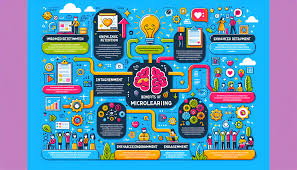Understanding the U.S. Education System: A Complete Guide for Students and Parents
The United States is home to one of the most diverse and flexible education systems in the world. Whether you’re a local resident or an international student planning to study in the U.S., understanding how the system works is essential for academic success.
This article explains the structure of the American education system — from early childhood education to college and beyond.
1. Early Childhood Education (Preschool and Pre-K)
Education in the U.S. often begins before kindergarten, with preschool or “Pre-K” programs. These are designed for children aged 3–5 and focus on basic skills like:
- Social interaction
- Motor development
- Early literacy and numeracy
While not mandatory, early education prepares children for formal schooling.
2. Primary Education (Elementary School)
Kindergarten to 5th Grade
Primary or elementary school starts with kindergarten (age 5–6), followed by grades 1 through 5. Students learn fundamental skills such as:
- Reading and writing
- Basic mathematics
- Science and social studies
- Art, music, and physical education
Public elementary education is free and compulsory in all U.S. states.
3. Secondary Education (Middle and High School)
Middle School (Grades 6–8)
Middle school bridges the gap between elementary and high school. Students explore more advanced topics and begin to develop independent learning habits.
High School (Grades 9–12)
High school typically runs from ages 14 to 18. The curriculum includes:
- English and literature
- Math (algebra, geometry, calculus)
- Science (biology, chemistry, physics)
- U.S. history and government
- Foreign languages
- Electives (e.g., computer science, economics, journalism)
At the end of high school, students receive a high school diploma, which is required to apply for college or university.
4. Standardized Testing
Standardized tests are commonly used to assess student performance and for college admissions. The most common tests include:
- SAT (Scholastic Assessment Test)
- ACT (American College Testing)
Some schools also conduct AP (Advanced Placement) exams, which can earn students college credit while still in high school.
5. Higher Education (Colleges and Universities)
After high school, students can pursue higher education through:
- Community Colleges: Offer 2-year associate degrees. Often used as a stepping stone to 4-year universities.
- Universities: Offer 4-year bachelor’s degrees, followed by graduate programs (master’s, PhD).
- Vocational/Technical Schools: Focus on career-specific training (e.g., nursing, IT, mechanics).
Many universities in the U.S. are globally recognized for their academic excellence and research.
6. Grading System in the U.S.
Grades are usually given as letters:
- A (90–100%) – Excellent
- B (80–89%) – Good
- C (70–79%) – Average
- D (60–69%) – Below Average
- F (below 60%) – Failing
The GPA (Grade Point Average) system is used to calculate overall academic performance, based on a 4.0 scale.
7. Education Funding
Public education in the U.S. is mostly funded by:
- State and local governments
- Property taxes
- Federal government (to some extent)
Higher education (college/university) often requires tuition fees, but many students receive:
- Scholarships
- Grants
- Student loans
- Work-study programs
8. Special Education and Support Services
U.S. schools offer individualized support for students with disabilities or learning challenges under laws like IDEA (Individuals with Disabilities Education Act). These services include:
- Special education teachers
- Speech and occupational therapy
- Individualized Education Plans (IEPs)
9. International Students in the U.S.
The U.S. remains a top destination for international students due to:
- Diverse campuses
- Flexible learning options
- Research opportunities
- Wide range of programs
Students must apply for a student visa (usually F-1) and meet English language requirements (like TOEFL or IELTS).
Conclusion
The U.S. education system is designed to promote individual growth, creativity, and lifelong learning. It offers multiple paths to success, whether you’re planning to enter a trade, a profession, or academic research.
Understanding how the system works is the first step toward making informed decisions for yourself or your child. With the right planning and support, students can thrive in the American education system and prepare for a bright future.


